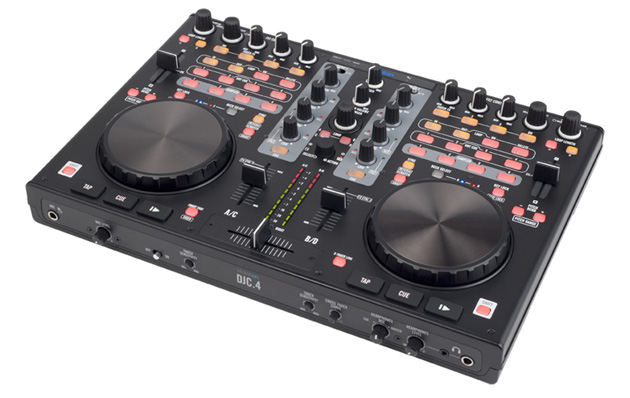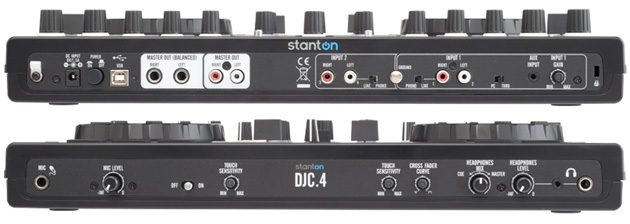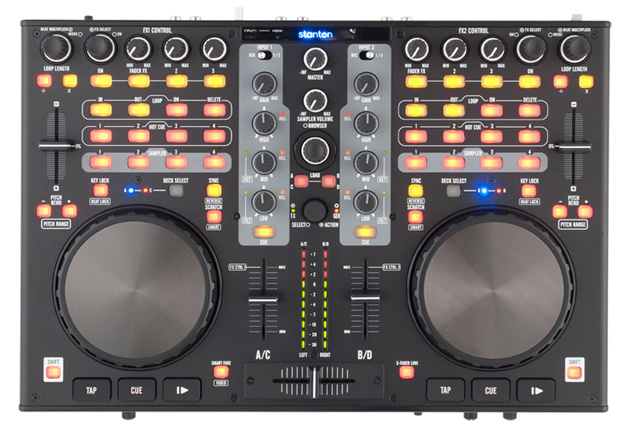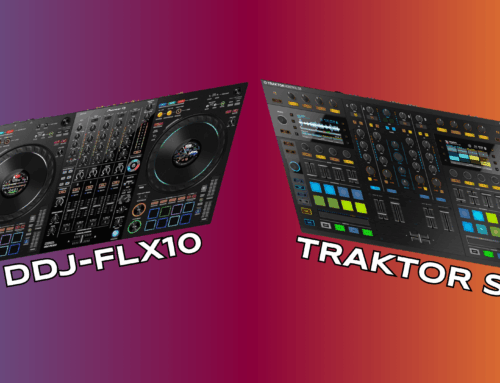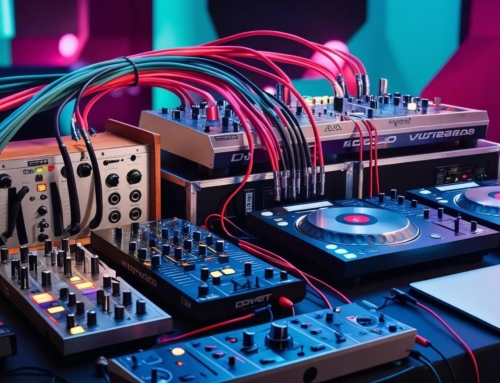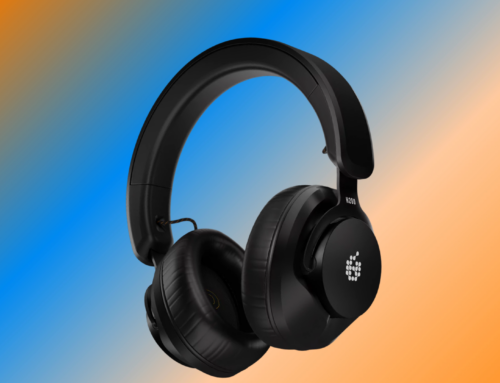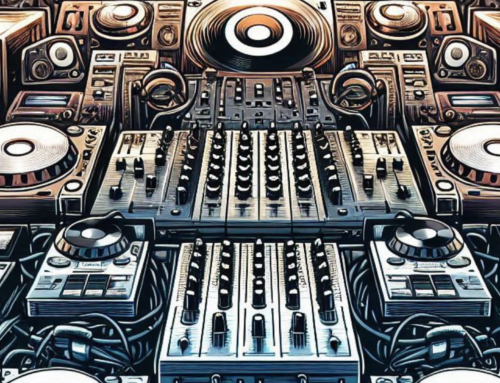 Any DJ, regardless of stage, knows there’s a thin but noticeably divisive line between quality and junk pieces of affordable gear. While nothing exceptional features wise, the Stanton DJC.4 Virtual DJ Digital Workstation falls into the former as the result of its design and excellent variety of MIDI controllers. Solid construction and ease of use set the DJC.4 apart from others in its price range (which, if you’re curious, is about $350 USD).
Any DJ, regardless of stage, knows there’s a thin but noticeably divisive line between quality and junk pieces of affordable gear. While nothing exceptional features wise, the Stanton DJC.4 Virtual DJ Digital Workstation falls into the former as the result of its design and excellent variety of MIDI controllers. Solid construction and ease of use set the DJC.4 apart from others in its price range (which, if you’re curious, is about $350 USD).
On a basic level, the controller with a four-channel audio interface, which comes with a four-deck version of Virtual DJ LE, provides capabilities for analog turntable and CD deck usage and has plug-and-play setup. Basically, you add the USB cable, load the software, and the DJC.4 is good to go. A high-resolution jog wheel and faders make for easy control, while a well-built steel chassis, faders, and chassis-nutted pots essentially give you more than your money’s worth for usage. Additionally, all buttons and encoders are equipped with shift, or dual, functionality, allowing for two or four deck usage, quick access to essential controls, and a second layer of functionality for all 95 MIDI controllers (63 buttons, five faders, 12 push encoders, 22 control dials, and two touch-sensitive jog wheels).
While, as you can see, the DJC.4 offers a better-than-average number of encoders, the truly standout feature is the jog wheels. In general, regardless of price, these parts provide just the right amount of resistance, especially for scratching. Beyond these qualities, the DJC.4 comes with a replaceable crossfader equipped with a hardware fader curve knob. The combination lets the user quickly access or implement custom preferences.
Rounding out the features are two high-resolution pitch faders, two pitch bend buttons, a balanced microphone input with volume and tone controls, and a loop and sample section with four CUE/LOOP trigger buttons on two banks. As far as usability is concerned, the DJC.4 provides standard, reliable functionality, providing for simultaneous control of four software decks. Tracks are easily loaded to any of the decks, while intuitive labeled shift layers offer straightforward access to filter, key, and other controls.
The mixer feature, as well, provides analog inputs for two turntables or CD players, with direct pass-through software for DVS control. Two MIDI inputs or an analog input can be assigned to each channel. Although the device produces above-average sound quality, particularly for its price range, the software, however, is one of the DJC.4’s drawbacks. Virtual DJ isn’t as highly sought-after of a program for professionals, and Virtual DJ LE provides the basics. Upgrading Virtual DJ Pro leads to better functionality, however. Also, the latest Traktor Pro 2 mapping is now available for the DJC.4. Click here and select the support tab to download the latest Traktor Pro 2 mapping.
While software is the primary drawback, the DJC.4 also lacks booth inputs and an AC adapter. Essentially, the Stanton DJC.4 can be boiled down to the following points: its construction and sound quality far exceed the price range, and overall, it makes a sufficient, if not excellent at points, value controller. It’s not going to replace your highly-priced gear any time soon; however, DJs on a budget looking for longer-lasting, more dependable gear may want to turn their attention to the DJC.4.
